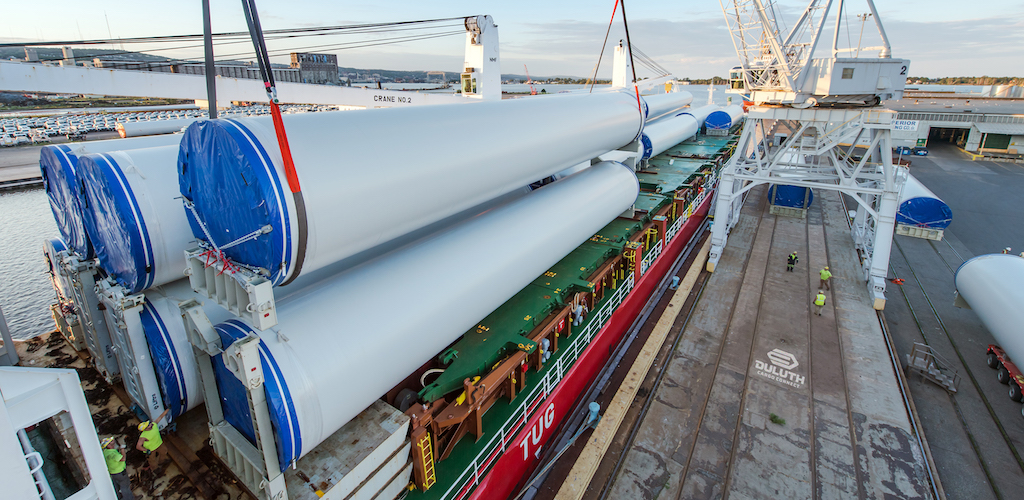Sep 18 | 2020
(Americas) Wind Cargoes Lift Volumes

Authorities at the St. Lawrence Seaway have announced a slight decline in cargo tonnage in August, as the Covid-19 pandemic continues to disrupt trade.
The St. Lawrence Seaway Management Corp. reported that total tonnage fell to 19.3 million tonnes in August, down 8.4 percent from 21 million tonnes in the same period last year. General cargo stayed relatively flat, declining only 0.65 percent to 1.3 million tonnes.
“After an early summer surge, maritime tonnage through the Port of Duluth-Superior slowed atypically in August, amidst a tepid recovery from Covid-induced lows,” a spokesperson for Port of Duluth-Superior said.
Wind Cargoes Boost Volumes
Duluth-Superior connects to the westernmost edge of the St. Lawrence Seaway System and acts as one of the waterway’s main multimodal hubs, handling the highest tonnage of any port on the Great Lakes.
As the seaway maritime navigation season continues, wind cargo shipments are expected to be one of the major drivers breakbulk demand in the second half, with overseas vessels arriving in Duluth from Brazil, India, Spain and Turkey, among other countries.
“Wind turbine blades, towers and nacelles comprised the breakbulk boost, with Duluth Cargo Connect serving as a premier multimodal distribution hub to multiple sites in North America’s heartland. Nine ships loaded with wind components visited the Clure Public Marine Terminal through Aug. 31, contributing to what could be a record campaign for the renewable energy cargo,” Duluth Seaway Port Authority said.
Tonnage Declines
Duluth Seaway Port Authority reported that total tonnage was down 31 percent for the first eight months, as compared to 2019, driven primarily by declines in coal and iron ore tonnage.
“If this pandemic-plagued shipping season was a prospector’s pan, there’d be a lot of black sand and only a few golden nuggets … but even a few golden nuggets are cause for excitement, and we’re certainly pleased to see strong grain numbers and potentially record-setting success with wind cargoes,” said Deb DeLuca, executive director of the Duluth Seaway Port Authority.
The St. Lawrence Seaway covers 3,700 kilometers from the Atlantic Ocean to the head of the Great Lakes and is connected via a system of locks, canals and channels that provide a deep draft waterway in both the U.S. and Canada. The waterway is represented by the Great Lakes Seaway Partnership, a coalition of leading U.S. and Canadian maritime organizations.
Subscribe to BreakbulkONE and receive more industry stories and updates around impact of COVID-19.


